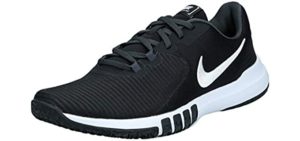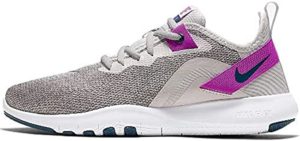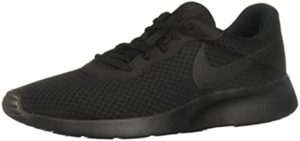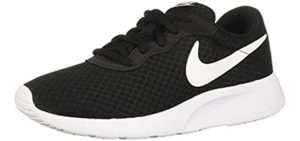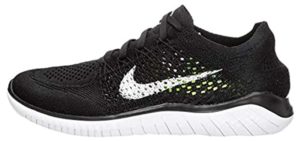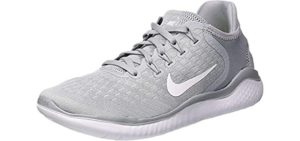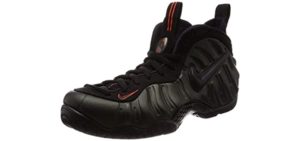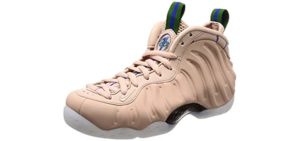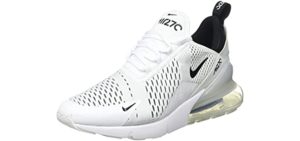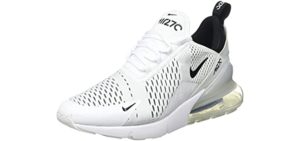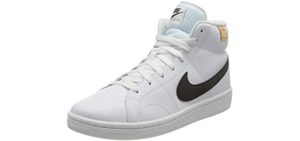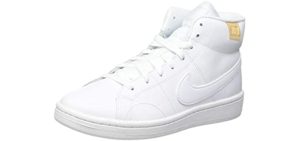Peroneal Tendinitis can be painful and disruptive, especially when you are an avid runner or sports person.
The right footwear for Peroneal Tendinitis can significantly impact your training routine and daily wear.
Thus, we have chosen Nike shoes for Peroneal Tendinitis that offer options in running shoes and casual recovery shoes.
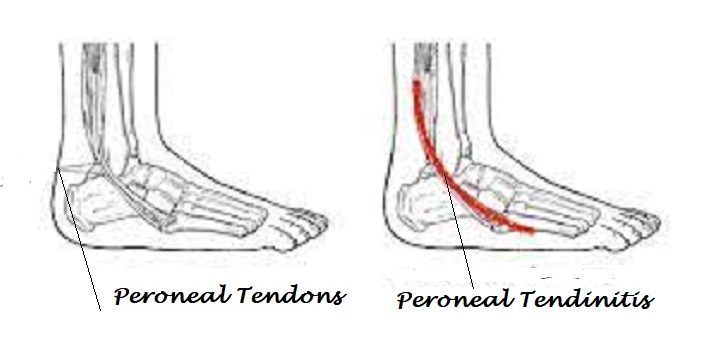
Peroneal Tendinitis Issues and Causes
Peroneal Tendinitis occurs when your Peroneal tendons rub against the Bone because of increased overuse and become painful and inflamed.
The Friction causes your Peroneal tendons to swell and sometimes thicken in size as they try to adjust to the increased workload. Peroneal Tendinitis is much more common in athletes, especially runners because runners tend to roll their feet outwards more, which causes this specific Friction between the Peroneal tendons and the Bone.
- Causes – Peroneal Tendinitis is mostly an overuse injury in athletes and runners with a motion where the peroneal tendon frequently rubs against the Bone, causing it to become inflamed. Suddenly increasing the length or intensity of your activities can also lead to Peroneal Tendinitis. Other factors include unsupportive footwear, high arch feet, and your lower limb muscles functioning together or their balance.
- Symptoms – You can have chronic and gradual Peroneal Tendinitis or sudden pain. You will feel the pain at the back of your ankle and may notice swelling, or the ankle is warm to the touch. The pain may be more severe during activity or when you turn your foot in and out.
- Treatment – You can use a Boot or support to prevent excess ankle movement or use a brace. Try to do lighter forms of exercise. Physical therapy, such as heat and ice, may also help. You can use medications or cortisone injections for the pain. Very rarely may surgery be required for Peroneal Tendinitis.
- Prevention – Firstly, wear supportive footwear that provides good support. Make sure to stretch your Calf muscles and Peroneal Muscles, especially before starting training or running. Make your load increase gradually, and do not over-exert yourself, especially during the healing period. Maintain some activity throughout your recovery period time.
Choosing Shoes for Peroneal Tendinitis
Well, we have thoroughly researched some ideal Nike shoe models for Peroneal Tendinitis, but for further reference, you can look for these characteristics;
- High heel-to-toe – Heel striking is better than midfoot or forefoot striking when you have Peroneal Tendinitis; a high heel-to-toe drop can help with this.
- Cushioning – Look for shoes with either full-length cushioning or additional cushioning in the midfoot and forefoot area.
- Arch Support – Peroneal Tendinitis is usually more prominent in people with High and Neutral arches. Thus, looking for shoes with the right arch support would be best.
- Flexibility – A more flexible sole than a rigid sole is ideal for the condition as you need a better range of motion and less stability.
- Ankle Support – Make sure the shoe has a secure ankle counter or higher top to support your ankles and prevent them from twisting or rolling.
Features of a Good Nike Shoe for Peroneal Tendinitis
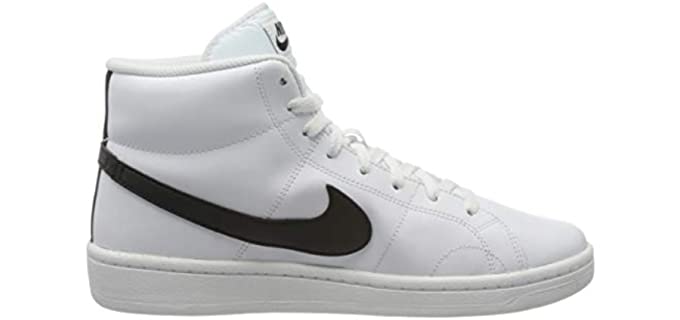
- Uppers and Fit – Nike Shoes for Peroneal Tendinitis are available in high-top and low-top and athletic shoe models. We have chosen some high-top models as they support Peroneal Tendinitis. Nike shoes may have leather or fabric uppers that are mesh for breathability. Their shoes come in many different styles and designs and usually have a smooth, moisture-wicking lining and a comfortable padded collar.
- Comfort and Support – Nike shoes come with their Air Infused Max Air or Nike Zoom Units in their midsoles or a foam midsole that offers shock absorbing and cushioning for better underfoot support. Their injected sole units are a more lightweight cushioning option.
- Outsole – Nike shoes have rubber outsoles with a Herringbone Pattern mainly, which are more durable and will allow for easier multi-directional movements.
Reviews: The Best Nike Shoes for Peroneal Tendinitis
Listed, we have some top Nike shoe models that are all suitable if you have Peroneal Tendinitis;
1
Cross Training Shoe for Peroneal Tendinitis
- The Nike Flex control is a more flexible training shoe suitable for Peroneal Tendinitis.
- The shoe has lightweight flexibility in the sole and fit, with a secure heel fit.
- It features a heel strap to hold your heel and ankle in the lave.
- The uppers are breathable mesh with a supportive fit.
- There is a foam midsole and cushioned insole for shock absorbency.
- The Outsole has a Tri-Star pattern that expands to disperse pressure more evenly.
2
Shoe for Peroneal Tendinitis
- The Nike Tanjun sneakers are casual everyday sneakers that look great and feel even better on your feet.
- You can use them for daily wear or light walking during your recovery period when you have peroneal Tendinitis.
- They have soft and comfortable mesh uppers, a padded collar, and a secure heel foot.
- There is very soft insole cushioning and an injected unit sole that offers lightweight cushioning and flexibility,
- The midsole doubles up as a durable and high-traction outsole that is lighter and softer on your feet.
3
Shoe for Peroneal Tendinitis
- Here we have the Free sneakers from Nike for everyday casual wear.
- They have breathable mesh uppers with a mesh lining to wick away moisture and create a more relaxed fit.
- There is an adjustable lace-up system for a secure fit.
- The shoes have a more flexible sole and comfortable midsole and insole cushioning.
- They offer a secure heel fit for Peroneal Tendinitis.
4
Peroneal Tendinitis Shoe
- The Nike Air Foamposite is a full foam shoe with a higher top fit to prevent excessive ankle movement.
- They have Foamposite uppers and a foam midsole for comfort.
- There is a high heel-to-toe drop and a durable rubber outsole.
- The Outsole has a Herringbone pattern for durability and multi-directional movements.
5
Shoe for Peroneal Tendinitis
- The Nike Max Air 270 is an all-day comfort shoe with stylish designs and colors.
- It has woven and fabric uppers with a higher and more secure heel fit.
- There is a foam midsole that is soft and comfortable m and extra bounce cushioning.
- The shoe has a streamlined detail and a secure fit for Peroneal Tendinitis.
6
Shoe for Peroneal Tendinitis
- I have chosen a more casual high-top Nike sneaker for occasional wear.
- It has leather uppers and a cushioned collar that protects your ankles from twisting.
- Though the sole unit is flat, it offers excellent traction with a herringbone pattern.
- The leather uppers are durable and come with the Nike logo; there is a comfortable padded insole.
Index Table: Top Rated Nike Shoes for Peroneal Tendinitis
| No. | Shoe | Men ♂ | Women ♀ | Features | Brand | Score |
|---|---|---|---|---|---|---|
| 1 | Nike® - Cross Training Shoe for Peroneal Tendinitis | Flex Control TR4 | Flex Trainer |
| Nike | 98 |
| 2 | Nike® - Shoe for Peroneal Tendinitis | Tanjun | Tanjun |
| Nike | 97.9 |
| 3 | Nike® - Shoe for Peroneal Tendinitis | Free RN | Free RN |
| Nike | 97 |
| 4 | Nike® - Peroneal Tendinitis Shoe | Air Foamposite | Air Foamposite |
| Nike | 97.5 |
| 5 | Nike® - Shoe for Peroneal Tendinitis | Max Air 270 | Max Air 270 |
| Nike | 97 |
| 6 | Nike® - Shoe for Peroneal Tendinitis | High Top | High Top |
| Nike | 96.9 |
Table of Contents
- Peroneal Tendinitis Issues and Causes
- Choosing Shoes for Peroneal Tendinitis
- Features of a Good Nike Shoe for Peroneal Tendinitis
- Reviews: The Best Nike Shoes for Peroneal Tendinitis
- Index Table: Top Rated Nike Shoes for Peroneal Tendinitis
